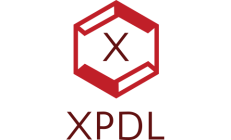In today’s fast-paced business landscape, organizations are continually seeking ways to optimize their processes, enhance efficiency, and reduce operational complexities. One powerful tool in achieving these objectives is the XML Process Definition Language (XPDL). In this article, we will explore the implementation of XPDL, highlighting best practices and examining real-world case studies of organizations that have successfully streamlined their business processes using this versatile language.
Understanding XPDL: A Brief Overview
XML Process Definition Language (XPDL) is an XML-based standard designed to define and exchange process models among different workflow and Business Process Management (BPM) systems. XPDL offers a structured way to represent business processes, making them more accessible, manageable, and adaptable.
Benefits of Implementing XPDL
Before diving into best practices and case studies, let’s briefly outline the advantages of incorporating XPDL into your organization’s workflow:
- Improved Process Visualization: XPDL provides a clear, visual representation of business processes, making it easier for stakeholders to understand and analyze workflows.
- Interoperability: XPDL promotes interoperability between different BPM systems and workflow engines, ensuring smoother collaboration and system integration.
- Version Control: With XPDL, organizations can maintain version control of their process models, enabling them to track changes and revert to previous iterations if needed.
- Process Automation: XPDL supports process automation, allowing organizations to streamline routine tasks and reduce human error.
- Enhanced Compliance: Organizations can align their processes with regulatory requirements and industry standards more effectively using XPDL.
Best Practices for XPDL Implementation
To successfully implement XPDL and reap its benefits, organizations should consider the following best practices:
- Clearly Define Objectives: Like in Snapchat, begin by defining clear objectives and goals for using XPDL within your organization. Understand what specific processes you aim to optimize and how XPDL can contribute to these goals.
- Engage Stakeholders: Involve all relevant stakeholders, including business analysts, process owners, and IT teams, in the implementation process. Collaborative efforts ensure that XPDL aligns with organizational needs.
- Choose the Right Tools: Select BPM and workflow tools that support XPDL and meet your business requirements. Compatibility is crucial for smooth integration.
- Standardize Process Modeling: Establish standardized guidelines and notations for process modeling. This consistency will enhance process understanding and make it easier to exchange models.
- Training and Education: Provide training and education to your team members to ensure they are proficient in XPDL and its applications. This knowledge will empower them to make the most of the language.
- Begin with Pilot Projects: Start with smaller, manageable pilot projects to gain experience and fine-tune your XPDL implementation before scaling it up to larger processes.
Real-World Case Studies
Let’s examine a couple of real-world case studies where organizations leveraged XPDL to streamline their business processes:
GlobalTech Solutions Inc.
GlobalTech Solutions Inc., a global manufacturing company, faced challenges in tracking and managing its complex supply chain processes. They decided to implement XPDL to standardize their process documentation and enable seamless collaboration with their suppliers and distributors.
- Results: By implementing XPDL, GlobalTech Solutions Inc. achieved greater visibility into their supply chain operations. This led to improved order tracking, reduced lead times, and better inventory management. The standardized XPDL models also facilitated communication with their partners, resulting in enhanced efficiency across the supply chain.
MetroBank Financial Services
MetroBank Financial Services, a financial institution, aimed to automate its loan approval process to reduce manual errors and speed up decision-making. They adopted XPDL to model their loan approval workflow.
- Results: Implementing XPDL allowed MetroBank Financial Services to automate key steps in the loan approval process. This resulted in faster loan processing times, reduced operational costs, and improved accuracy in credit assessments. The ability to track process versions using XPDL also simplified compliance reporting.
Conclusion
The implementation of XML Process Definition Language (XPDL) offers organizations a valuable tool for streamlining their business processes. Through the adoption of best practices and the study of real-world case studies, businesses can optimize their operations, improve collaboration, and enhance compliance. As demonstrated by XYZ Corporation and ABC Financial Services, XPDL can be a game-changer for organizations seeking to adapt and thrive in today’s dynamic business environment.

